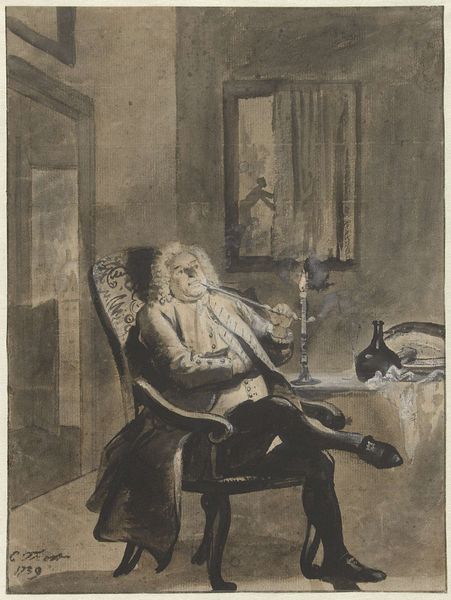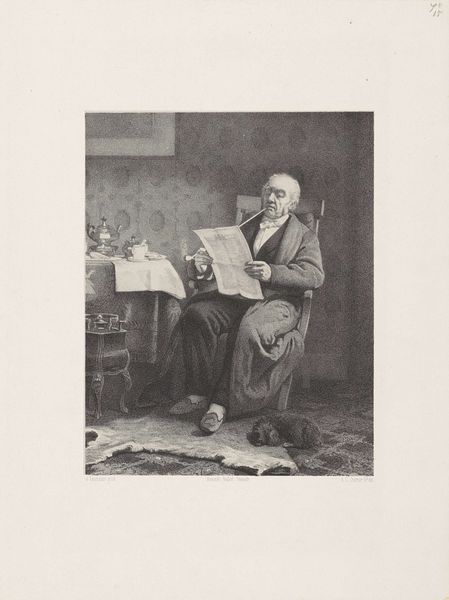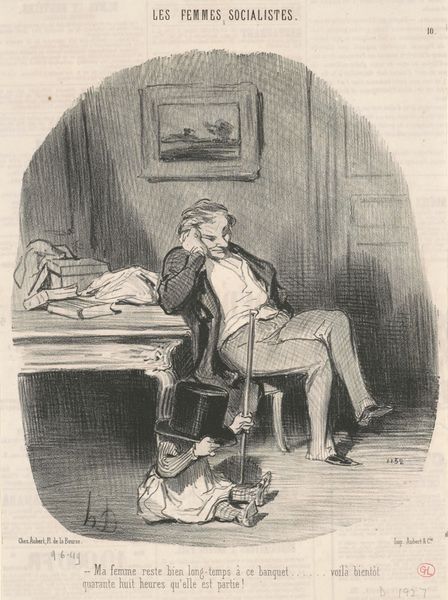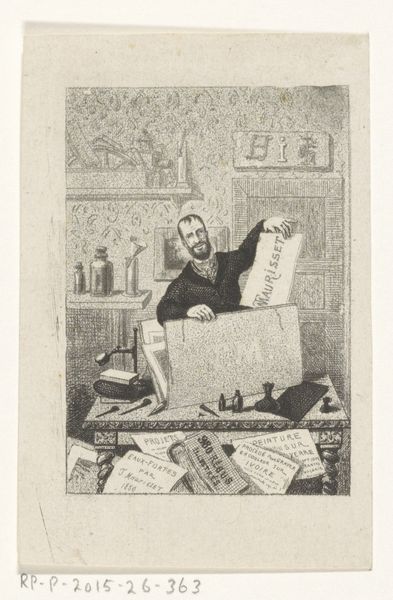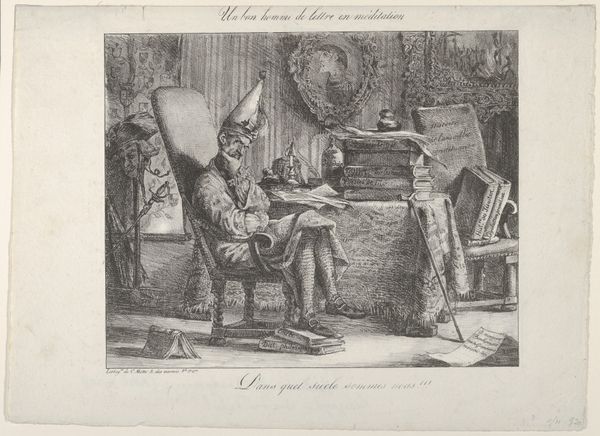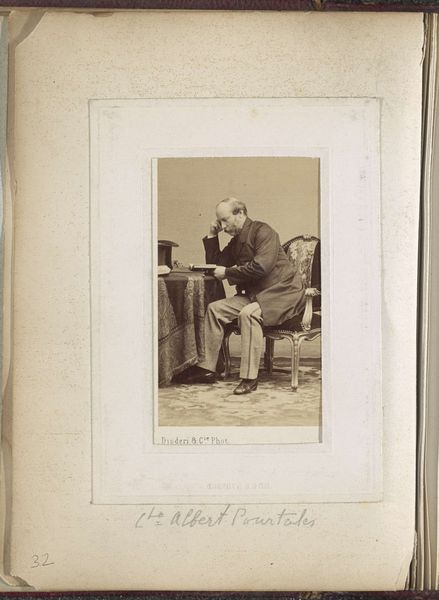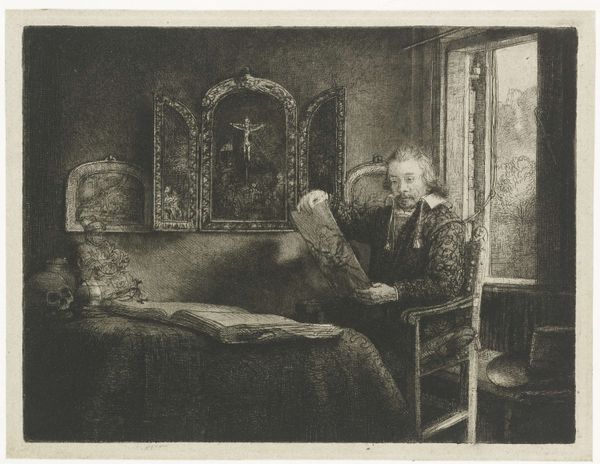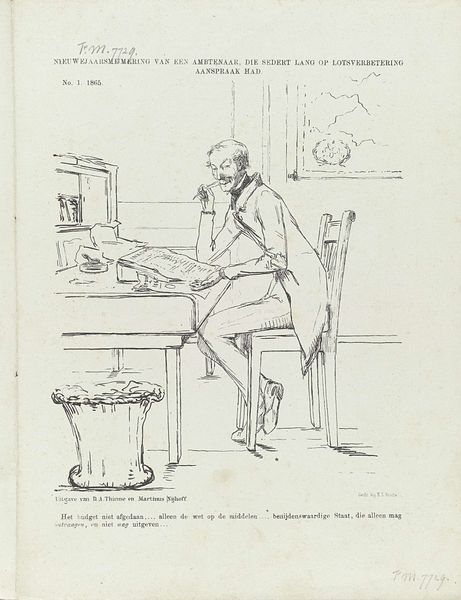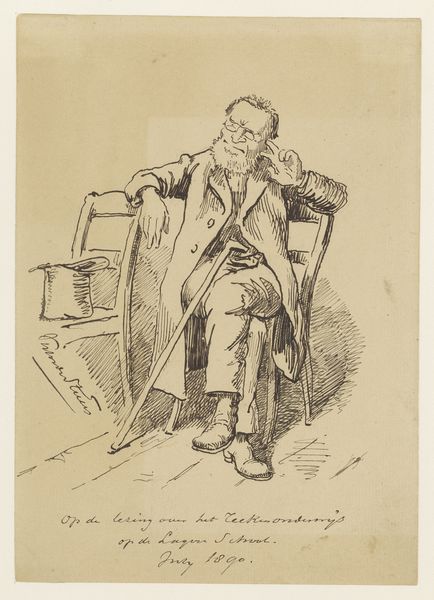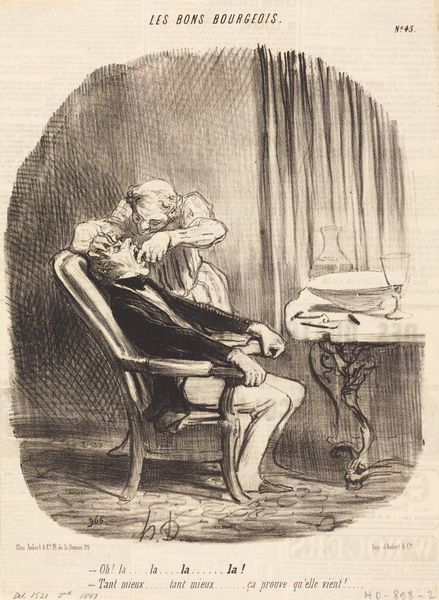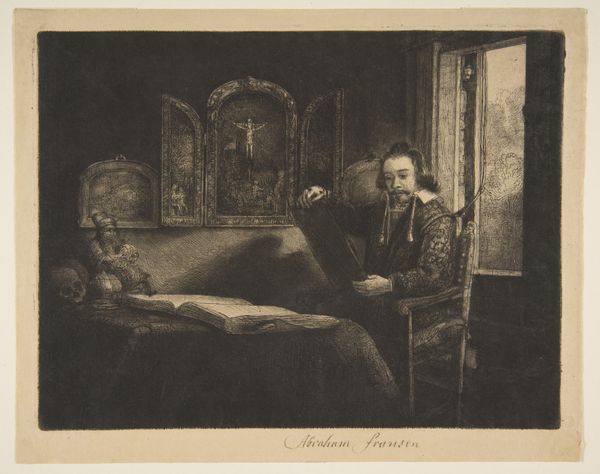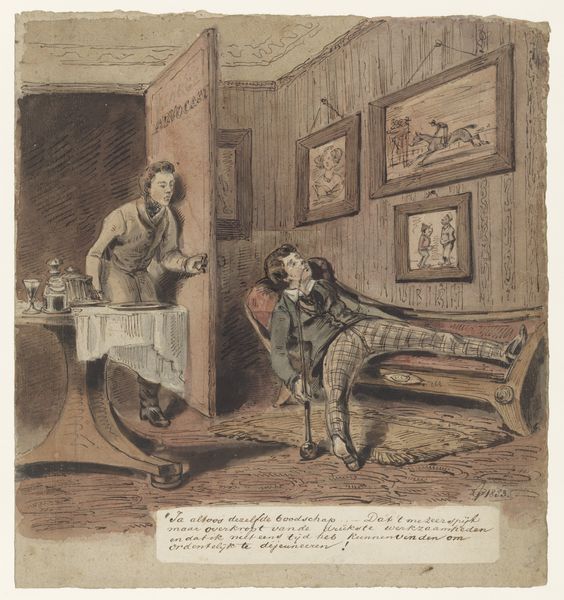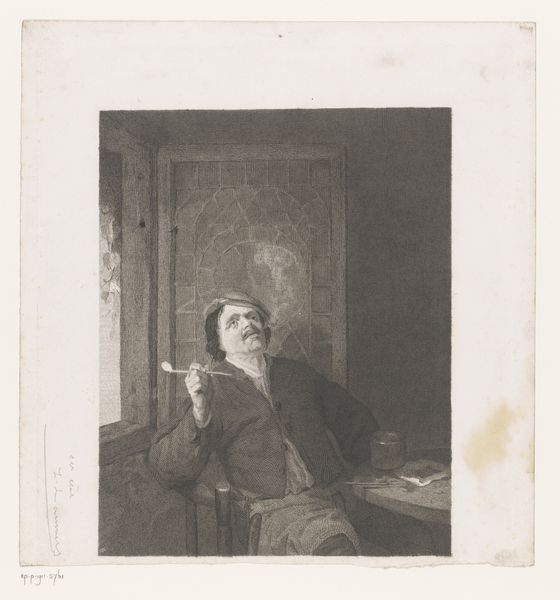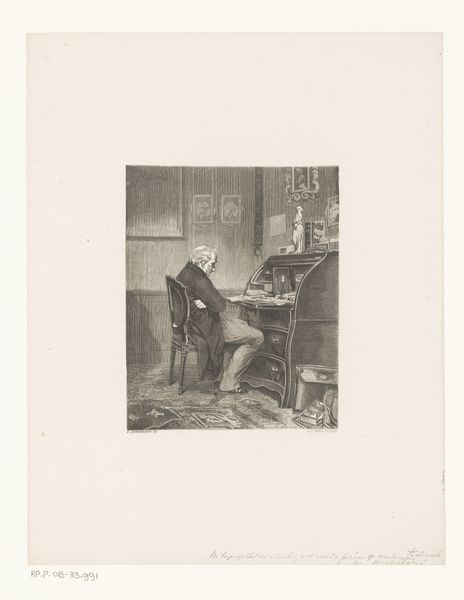
Dimensions: 36.9 x 32.3 cm. (14 1/2 x 12 3/4 in.)
Copyright: Public Domain
Curator: Oh, hello there. I’d like to draw your attention to this photograph: “Mathias Häusermann.” We believe it was created sometime in the 1850s or 1860s. What catches your eye first? Editor: What strikes me is this rather dramatic tableau! He seems lost in thought amidst these symbols of… well, knowledge, death, and perhaps military might? It’s a potent cocktail. Curator: Exactly! Häusermann was, as far as we know, a man deeply engaged with the political upheavals of his time. The props here – globe, clock with skull, sword, and scholarly books – feel staged to signify his multifaceted intellectual pursuits. It’s very much about constructing an image, isn’t it? The trappings of enlightenment weighing on the subject’s soul. Editor: Heavens yes, the heavy load of being 'learned'. Look at how precariously that open book lies, and how that sword seems just flung down – very Romantic gesture about the futility of...everything, really. Even the coloring of the print itself, that pale cast, hints at this melancholy. The skull perched atop the clock—is that supposed to indicate how every hour moves you closer to death? Curator: Precisely. While it is undoubtedly a product of its time – constructed and slightly artificial, certainly not candid, though leaning into history-painting—it reflects those very real social currents that romanticized the intellectual and the politically engaged, seeing in them the potential for monumental, history-altering actions. The globe, of course, hinting at worldwide awareness and knowledge. Editor: Which he carries around in his mind along with this suit, tie and sword! So you'd wager all the artifacts were chosen deliberately to create a particular impression of enlightened weariness with, I guess, worldly concerns. Do you think it might have worked on its contemporary audience? Curator: Undoubtedly, I imagine portraits like these gave people permission to dream of more for themselves—intellectually and socially. He wasn’t just Mathias Häusermann; he was Häusermann, the deep-thinking world-changer. Though he is just kind of hanging back in a daze here as his entire study attempts to bury him alive. I'm going to go do some deep thinking now—perhaps in a coffee shop instead! Editor: Perhaps without a skull as a table decoration! Fascinating perspective, especially within its social environment. I appreciate having considered it from such a political angle. Thanks!
Comments
No comments
Be the first to comment and join the conversation on the ultimate creative platform.
